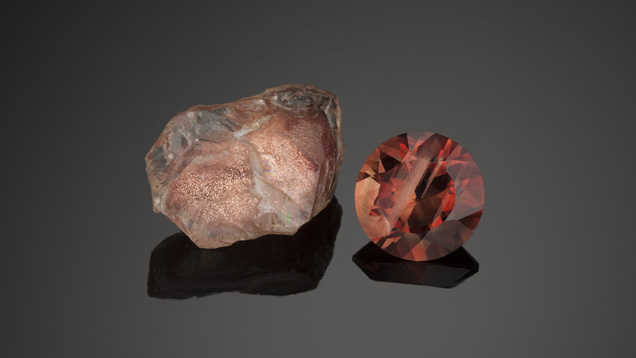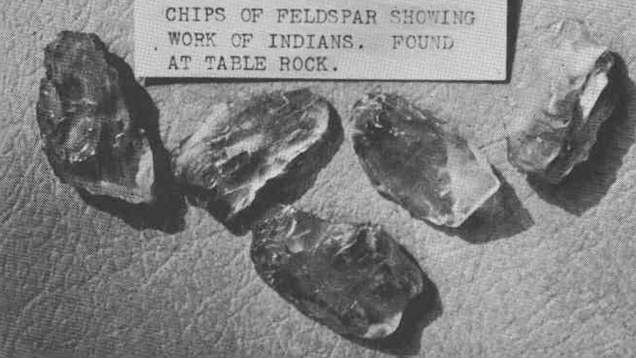Sunstone History and Lore

According to Native American legend, the blood of a great warrior – wounded by an arrow - dropped onto pieces of Oregon sunstone. The blood carried his warrior spirit into the stones, coloring them with shades of red and giving them sacred power. A museum in Jacksonville, Oregon, includes sunstones in its display of Indian artifacts. In Oregon today, several mining claims produce enough of this unique material to supply mass marketers as well as carvers and high-end jewelry designers.
This photo shows a large sunstone fragment said to be from among the early discoveries in Oregon’s Warner Valley.

Ore Pit, a publication of Oregon State University’s mineralogy department, published this picture of a collection of sunstones from a Jacksonville, Oregon, museum’s display of early Native American sunstone artifacts.



